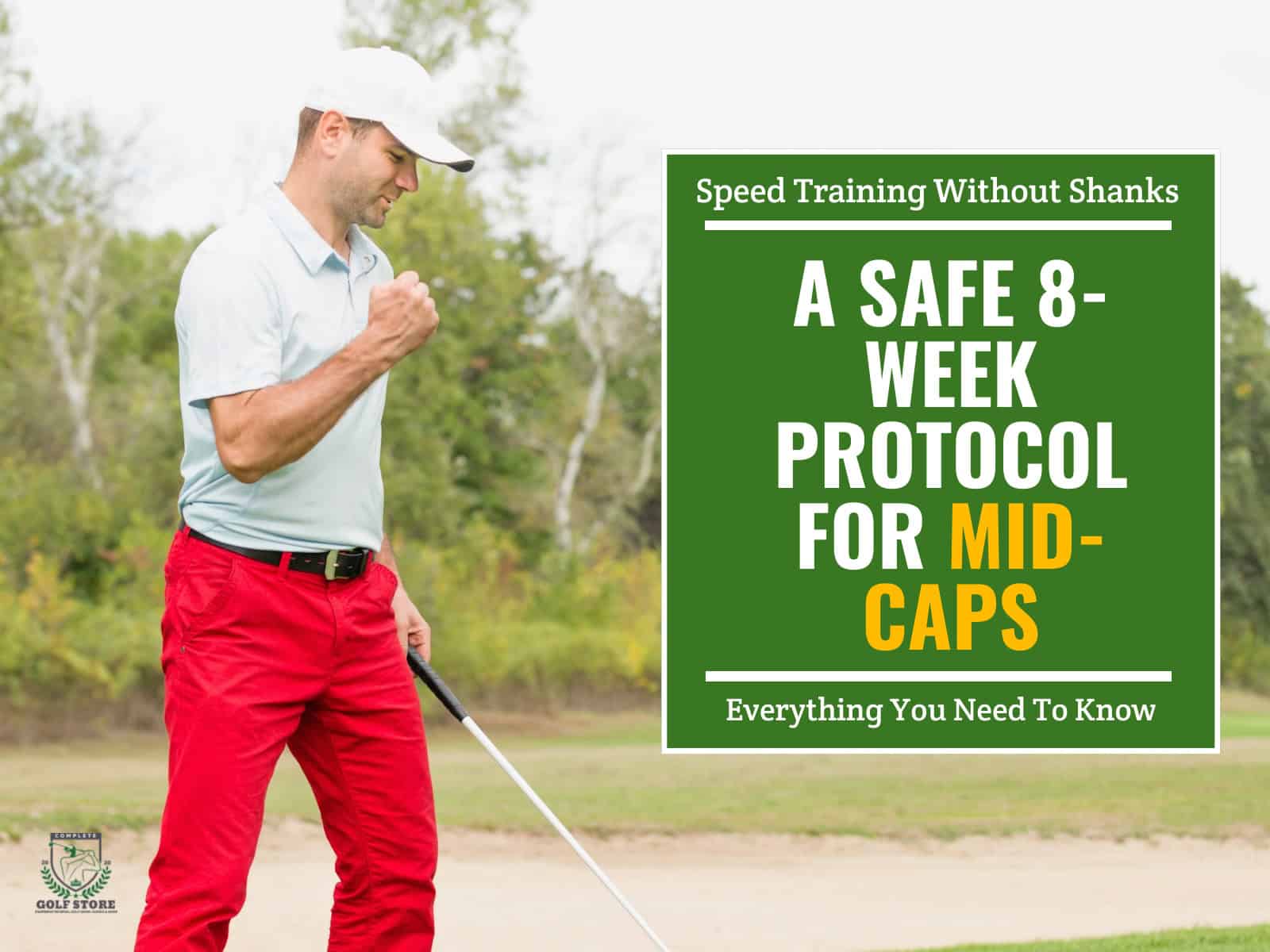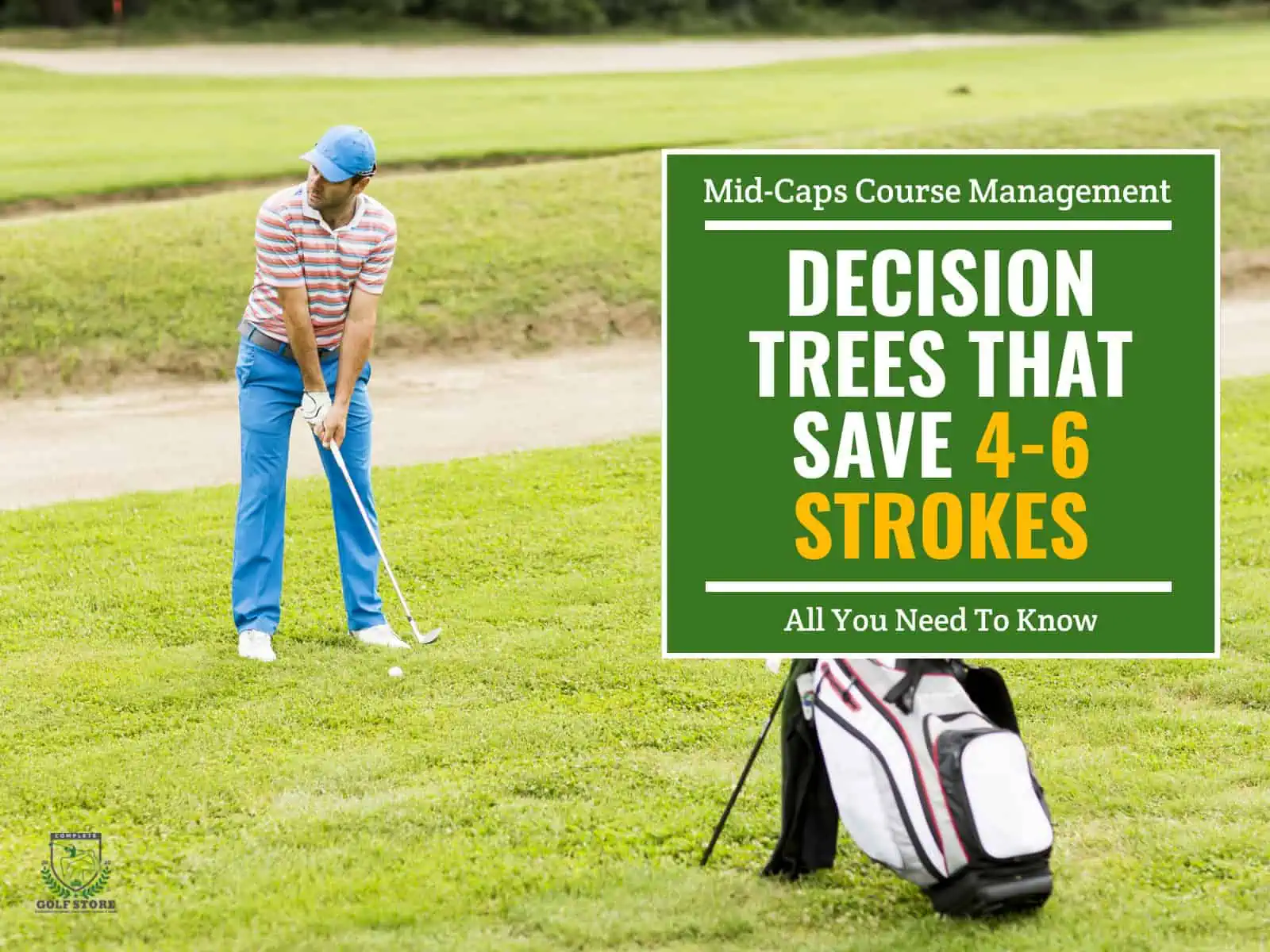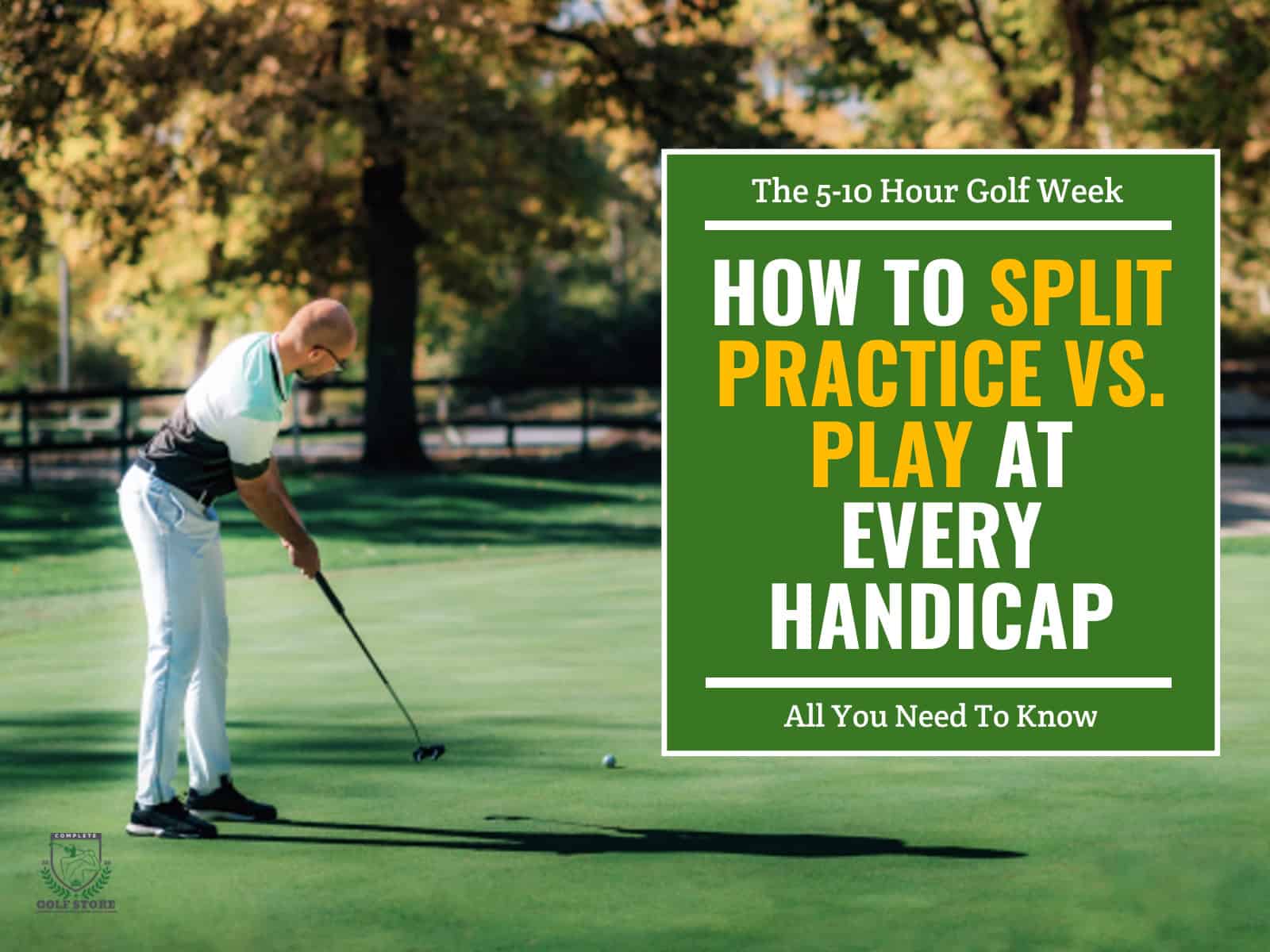Choosing the right golf tee size is crucial for optimizing your tee shots and setting yourself up for success on the course. The proper tee size helps you achieve the ideal ball height, promoting better contact with the clubface and maximizing distance. It also affects your shot’s accuracy and trajectory.
Using a tee that’s too short or too tall can lead to inconsistent shots, reduced distance and even mishits. Factors to consider when selecting a golf tee include the type of club you’re using, your swing characteristics and personal preference.
In this article, we’ll explore the world of golf tee sizes for beginners, offering practical advice to help you choose the best options for your unique swing and playing style.
- 1) Basics of Golf Tees
- 2) Factors to Consider When Choosing Golf Tee Size
- 3) Detailed Guide to Golf Tee Sizes for Beginners
- 4) Common Mistakes Beginners Make with Tee Size
- 5) Benefits of Using the Right Golf Tee Size
- 6) How to Practice with Different Tee Sizes?
-
7)
Frequently Asked Questions
- 7.1) What is the most common tee size for beginners?
- 7.2) Can the same tee be used for all types of clubs?
- 7.3) How does tee height affect my swing?
- 7.4) Are there any tees designed specifically for beginners?
- 7.5) How often should I replace my golf tees?
- 7.6) What are zero-friction tees and should beginners use them?
- 7.7) Do different golf courses require different tee sizes?
- 8) Final Thoughts
Basics of Golf Tees
A golf tee is used to elevate the golf ball above the ground. It provides a clean strike, reducing interference from the turf. Tees are essential for the first stroke of each hole, particularly when using a driver or other long clubs. By lifting the ball, they help you achieve better launch conditions and optimal ball flight.
Different Materials Used for Golf Tees
Golf tees come in a variety of materials, each with unique characteristics:
Wooden Tees
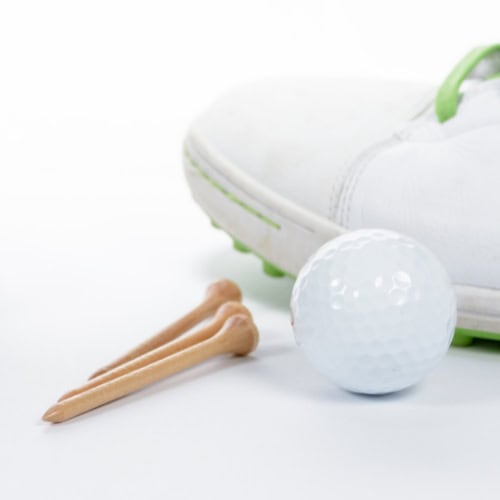
Wooden tees are traditional and widely used. They offer a natural feel and are biodegradable, which makes them environmentally friendly. However, they can break more easily compared to other materials.
Plastic Tees
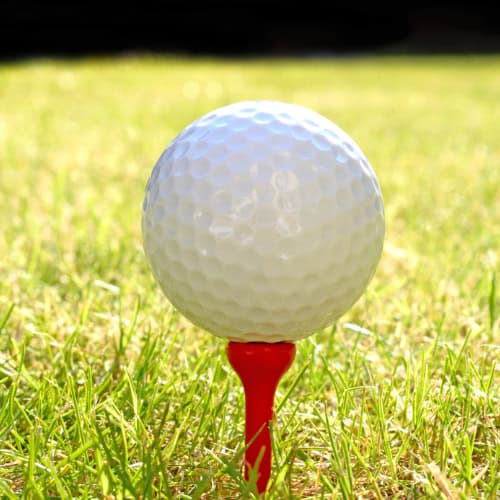
Plastic tees are durable and can withstand numerous hits. They are less likely to break, offering longevity. On the downside, they aren’t as eco-friendly as wooden tees, but some are made from recycled materials.
Bamboo Tees
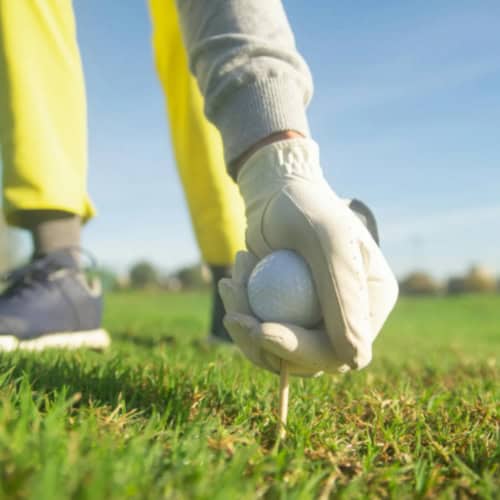
Bamboo tees provide a middle ground between wooden and plastic tees. They are more durable than wood but still biodegradable. Bamboo is also renewable, making these tees a sustainable choice.
Standard Golf Tee Sizes
Tees come in several sizes to match different clubs and playing styles. Here are the common sizes:
2 ¾ Inch Tees
These are versatile and work well for most drivers and fairway woods. They offer a good balance, making them a popular choice for many golfers.
3 ¼ Inch Tees
Designed for larger, modern drivers, these tees provide extra height. They help achieve a higher launch angle, which can result in longer drives for many players.
Specialty Tees
These include shorter tees for irons and hybrids, as well as innovative designs like brush tees or zero-friction tees. Specialty tees aim to reduce resistance and offer specific benefits tailored to different needs and preferences.
Factors to Consider When Choosing Golf Tee Size
The following are the main factors to consider when you want to choose a tee size that suits your game and style:
Player’s Height and Swing
Your height and swing style play a significant role in selecting the right tee size. Taller players generally benefit from longer tees to achieve the optimal launch angle. Conversely, shorter players might find shorter tees more comfortable.
Your swing speed and angle of attack also influence tee height. A faster swing speed often requires a higher tee to promote a better ball flight, while a slower swing benefits from a lower tee position.
Type of Club Used
Different clubs require different tee heights for optimal performance. Drivers, with their larger clubheads, need higher tees to hit the ball on the upswing, maximizing distance.
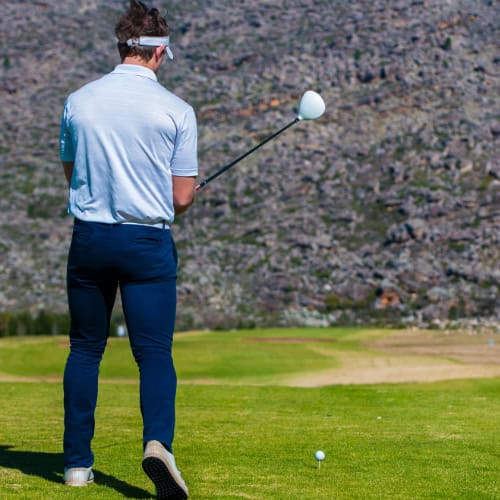
Fairway woods and hybrids, however, work better with a slightly lower tee to ensure solid contact. Irons, on the other hand, are designed for more control and accuracy at mid-range distances. If you’re a high handicapper looking to improve your iron game, our golf irons for high handicappers guide provides valuable insights into choosing the right irons to suit your swing and skill level.
Ground Conditions and Course Type
The condition of the course can also affect your tee choice. Hard, dry ground might necessitate a lower tee to keep the ball flight under control.
Conversely, soft or wet conditions might benefit from a higher tee to prevent the ball from plugging. Links courses with their windy conditions may require adjustments in tee height to maintain accuracy and distance control.
Beginner vs. Experienced Player Considerations
Beginners often find it easier to start with a standard tee height, usually around 2 ¾ inches, which works well for most drivers. This helps them develop a consistent swing and understand ball flight mechanics while using beginner-friendly golf tees.
New golfers can embark on their swing journey with a strong foundation by referencing our golf swing basics for beginners guide. By understanding the core mechanics and avoiding these pitfalls, you’ll be well on your way to developing a smooth and powerful swing.
Experienced players, having a better grasp of their swing dynamics, can experiment with different tee heights to fine-tune their performance and address specific challenges on the course.
Detailed Guide to Golf Tee Sizes for Beginners
Let’s now discuss the best tee size choices depending on the club(s) you intend to use and other factors.
Optimal Tee Size for Drivers
Getting the right tee height for your driver can transform your game. For most beginners, a 3 ¼ inch tee is ideal. This height allows the ball to be struck on the upswing, promoting a higher launch and more distance.
Position the ball so half of it sits above the driver’s crown. This setup ensures you get under the ball for optimal lift and reduces the chance of hitting it too low on the clubface, which can cause a low, weak shot.
Optimal Tee Size for Fairway Woods
Fairway woods require a slightly lower tee than drivers. A 2 ¾ inch tee often works best. This height supports a more sweeping swing path, helping to catch the ball cleanly off the tee.
Position the ball so it’s just above the top of the clubface. This placement helps achieve a solid strike, ensuring good distance and accuracy without the ball flying too high.
Optimal Tee Size for Irons and Hybrids
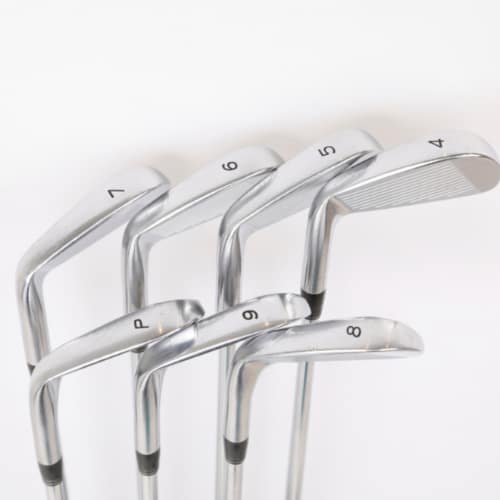
When using irons or hybrids, tee the ball much lower. A 1 ½ inch tee is usually sufficient. The goal is to position the ball just above the grass.
This setup allows you to make contact with the ball first, then the ground, promoting a clean strike and proper ball flight. Too high a tee can cause thin shots or mis-hits, reducing control and distance.
Tee Size for Par 3 Holes
Par 3 holes often call for precision over power. Use a tee height that matches the club you’re using, typically an iron or hybrid.
A 1 ½ inch tee works well here, as it gives you the stability needed for accurate shots. Keeping the ball just off the ground helps in making a solid, controlled swing, which is essential for hitting the green and setting up a potential birdie or par.
Adjusting Tee Height Based on Swing Speed
Swing speed influences how high you should tee the ball, as faster swings benefit from a higher tee, especially with drivers, to maximize lift and distance. Slower swings might need a lower tee to ensure solid contact and control.
Experiment with different heights to find what best complements your swing speed. Adjusting tee height to your swing can lead to better performance and more enjoyable rounds.
Common Mistakes Beginners Make with Tee Size
Beginners usually make all types of mistakes because they still need to learn and experiment with different gears, materials, conditions, etc. Here are some common mistakes when dealing with tees:
Using One Tee Size for All Clubs
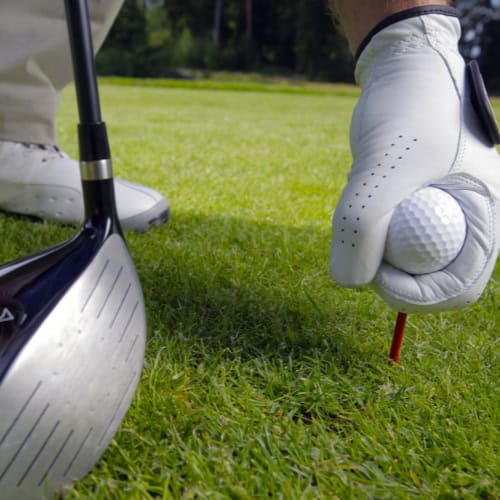
Many beginners fall into the trap of using one tee size for all their clubs. While it might seem convenient, it can lead to inconsistent performance. As discussed earlier, drivers need higher tees to optimize launch angles, while irons and hybrids require lower tees for better control.
Sticking to one size limits your ability to maximize each club’s potential. Instead, carry a variety of tee sizes to suit different clubs and situations.
Ignoring Tee Material
Not all tees are created equal. Wooden tees, plastic tees and bamboo tees each offer different benefits and drawbacks. Ignoring these differences can affect your game.
Choosing the right material for your needs can enhance your playing experience.
Incorrect Tee Placement in the Ground
Proper tee placement is crucial for a good shot. Placing the tee too high or too low can result in poor contact and errant shots. Consistent tee placement helps develop a reliable swing and improves your accuracy over time.
Overlooking Weather and Ground Conditions
Weather and ground conditions play a significant role in tee selection. On windy days, a lower tee can help keep the ball flight stable. In wet or soft ground, a higher tee can prevent the ball from sitting too low and losing distance.
Paying attention to these conditions and adjusting your tee height accordingly can help maintain performance in varying situations.
Benefits of Using the Right Golf Tee Size
As you learn to make the right tee choice depending on the club you’re using, the situations and weather conditions, you will be ready to reap the benefits those choices can have for your game.
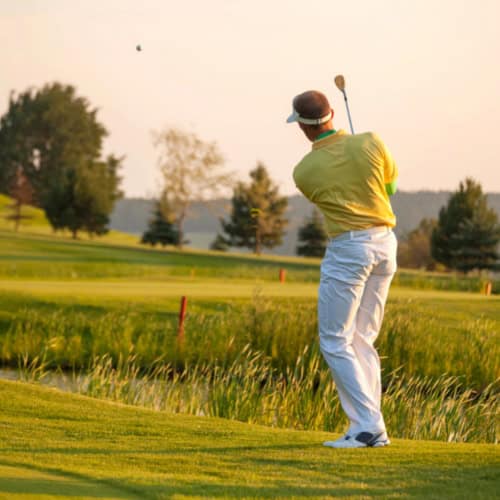
Improved Ball Flight and Distance
Choosing the right tee size can drastically improve your ball flight and distance. When the ball is positioned correctly on the tee, it promotes an optimal launch angle. This setup leads to higher, longer drives, maximizing your yardage off the tee.
By ensuring the ball is teed at the correct height, you reduce the risk of topping the ball or hitting it too low, both of which can rob you of valuable distance.
Enhanced Accuracy and Control
Using the correct tee height also enhances your accuracy and control. A properly teed ball aligns better with your clubface, resulting in more consistent contact. This consistency translates into straighter shots and fewer wayward drives.
Accurate tee height helps you manage the direction and trajectory of your shots, giving you better control over where the ball lands.
Better Club Performance
Proper tee height allows your clubs to perform at their best. Drivers and fairway woods, in particular, benefit from being used with the correct tee size.
Using the right tee size for each club ensures that you’re taking full advantage of its design and maximizing its potential.
Reduced Risk of Injury
Finally, the right tee size can help reduce the risk of injury. When the ball is teed at an appropriate height, your swing mechanics are more natural and less strained.
Incorrect tee height can force you into awkward positions, increasing the chance of strains or repetitive stress injuries., while maintaining proper tee height supports a healthy, efficient swing, helping you stay on the course longer without discomfort.
How to Practice with Different Tee Sizes?
Practicing with different tee sizes can refine your game and help you understand which height works best for each club. Start by setting up a routine that includes a variety of tee heights. Begin with your driver on a higher tee, then move to fairway woods on a mid-height tee, and finish with irons and hybrids on a lower tee. This progression helps you adjust to different tee heights and see how each impacts your shot.
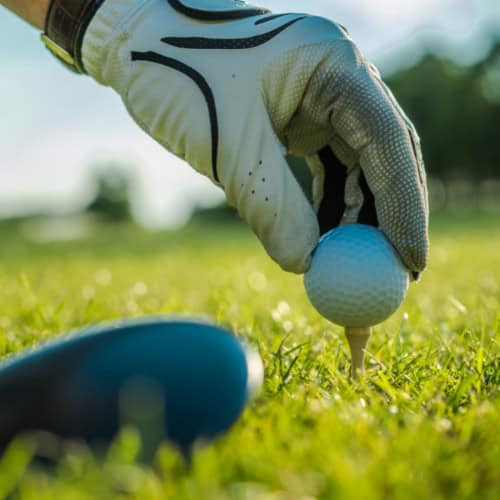
Training aids can be incredibly useful when practicing with different tee sizes. Devices like adjustable tees allow you to easily change heights and find the perfect setup for each club. Launch monitors can provide instant feedback on your ball flight and distance, helping you fine-tune your technique. Alignment sticks can help you ensure that your setup is consistent, leading to more reliable results.
Tracking your progress is also crucial for improving your game. Keep a practice journal to note which tee heights work best for different clubs and conditions. Record your distances and accuracy to see patterns and areas for improvement.
If you notice consistent issues with a certain tee height, make slight adjustments and test again. Over time, this data will help you understand your game better and make more informed choices on the course.
Frequently Asked Questions
In this section of the article, we will answer some commonly asked questions to ensure you are well-equipped to make the perfect choice of tees in any situation that you face on the course.
What is the most common tee size for beginners?
The most common tee size for beginners is 2 ¾ inches. This size offers a versatile height suitable for drivers and fairway woods. It provides enough elevation to optimize ball flight while being manageable for those still mastering their swing.
Can the same tee be used for all types of clubs?
While it’s possible to use the same tee for all clubs, it’s not ideal. Drivers typically need a higher tee (around 3 ¼ inches), whereas irons and hybrids benefit from lower tees (around 1 ½ inches). Using the appropriate tee height for each club can significantly improve your performance.
How does tee height affect my swing?
Tee height directly impacts your swing and ball flight. A higher tee allows for an upward strike, increasing launch angle and distance, ideal for drivers. Conversely, a lower tee promotes a downward strike, better for irons and hybrids, helping achieve control and accuracy.
Are there any tees designed specifically for beginners?
Yes, some tees are designed with beginners in mind. These tees often feature markings to guide proper placement and height, helping new players achieve consistent ball positioning. Some beginner-friendly tees also have wider bases for stability, making them easier to use.
How often should I replace my golf tees?
Golf tees should be replaced as needed. Wooden tees tend to break more frequently and may need replacing after a few hits. Plastic and bamboo tees are more durable, but even they can wear down or become bent over time.
Regularly check your tees and replace them when they show signs of damage to maintain consistent performance.
What are zero-friction tees and should beginners use them?
Zero-friction tees are designed to reduce the resistance when the club strikes the ball. They have fewer points of contact with the ball, potentially increasing distance and accuracy.
Beginners can benefit from using zero-friction tees as they help in achieving cleaner hits and reducing side spin.
Do different golf courses require different tee sizes?
Yes, different golf courses can influence your choice of tee size. Courses with harder ground might benefit from slightly higher tees to prevent the ball from sitting too low. On softer courses, lower tees can help maintain stability.
Adjusting tee height based on course conditions can improve your overall performance.
Final Thoughts
Choosing the right golf tee size is crucial for enhancing your game. The correct tee height improves ball flight, distance, accuracy, and control. Different clubs require specific tee heights, and adjusting for ground conditions can make a significant difference.
Experiment with various heights during practice to find what works best for each club. Keep track of which tee sizes improve your performance.
Golf is a game of constant learning and adjustment. Embrace the process, experiment with different setups and enjoy the improvement journey. With practice and patience, you’ll see notable progress on the course.
Thanks for reading!



